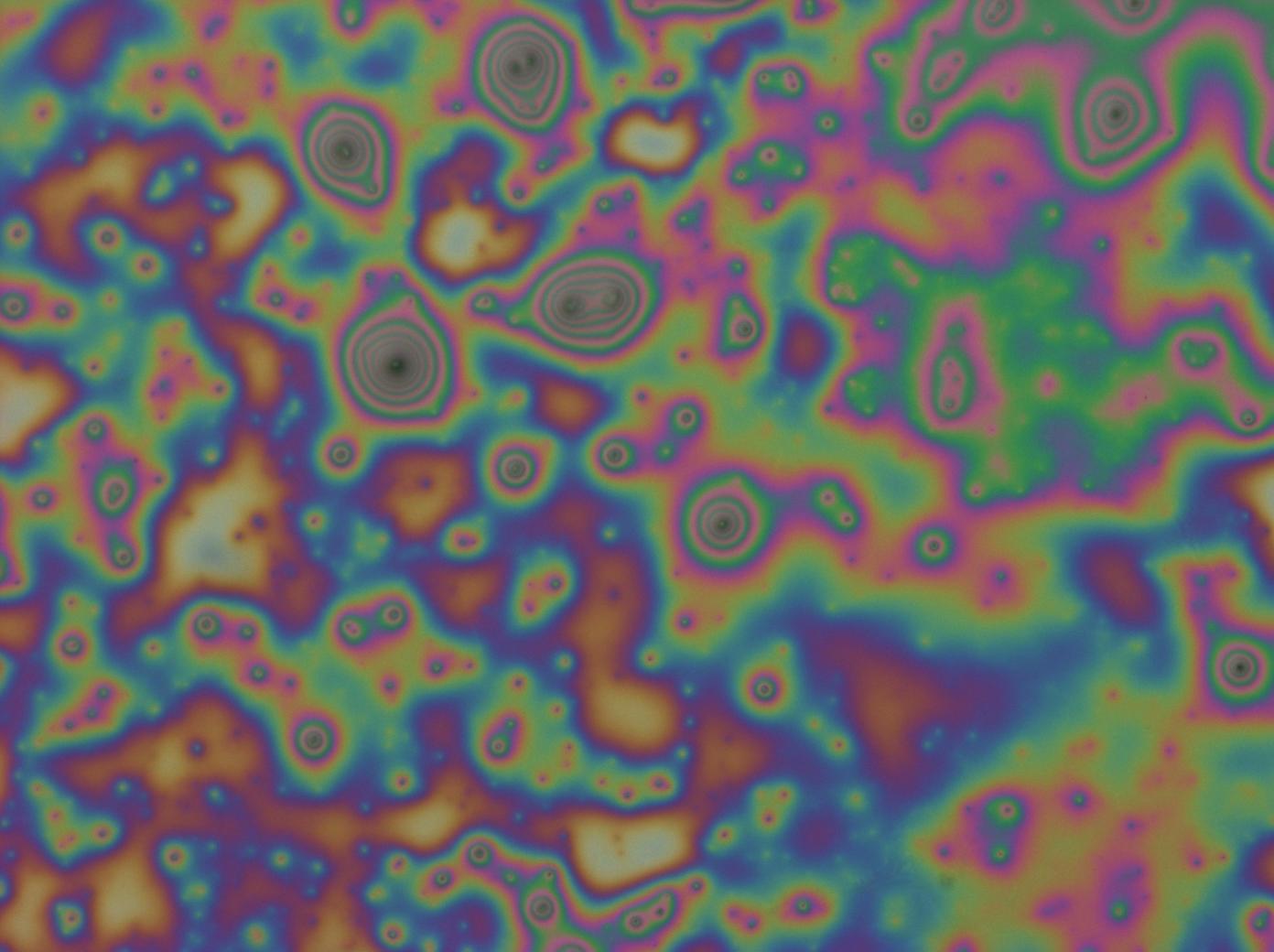Team:Cambridge/Experiments/Reflectin Thin Films II
From 2011.igem.org
Contents |
Reflectin Thin Films II
We refined our methods in a number of ways:
Practice
- Centrifugation of the solutions prior to spin and flow coating to sediment the impurities that caused thickness variations previously. (13000rpm for 10 minutes)
- We introduced liquid CO2 pressure wash to improve cleaning of the silicon substrates
- Trialled spin coating on a glass substrate to allow us to image the way the thin film refracts and transmits light.
- We heat cured the thin films, 10 minutes at 80 or 120 degrees.
- We recorded the reflectance spectra of some of the thin films
- We ran a control using the protein bovine serum albuimin.
Results
The centrifugation appears to have reduced the disruption due to impurities in the coated solution
This film shows mainly dark points suggesting impurities, and a great variation in colour, which implies a variation in film thickness.
This film shows a much more uniform colour, dark blue in the bottom left fading to yellow in the top right. There are still numerous marks that suggest impurites, but they are dominated by the smooth blue and yellow regions.
The BSA control shows a much poorer ability to form a thin film than reflectin, though it does reflect a very discrete selection of wavelengths - mostly blue as opposed to the multiple colours seen in the reflectin films above. There are much less distruption in the form of impurites, most likely as the bovine serum albumin was purified industrially as opposed to the small scale methods we are using in the lab.
Safety
The new hazards identified with the changes are the liquid CO2 pressure washer and the hot plate. Dr Matthew Hawkeye performed all use with the pressure washer in the fume hood, whilst care was taken with the hot plate, using tweezers and wearing gloves to manipulate the hot substrates and allowing time to cool prior to mounting for microscopy.
 "
"



